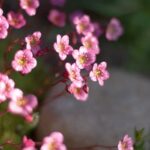Are you looking for new ways to elevate the aesthetics of your outdoor space? Rock landscaping ideas can be the perfect solution to add texture, dimension, and visual interest to your garden. Whether you are aiming for a minimalist modern look or a more natural and rustic feel, incorporating rocks into your landscaping can create a stunning and unique design that will surely stand out.
When it comes to rock landscaping, the options are endless. From choosing the right types, sizes, and colors of rocks to planning the layout and design of your rock garden, there are various considerations to take into account. In this introductory section, we will explore why rock landscaping is such a popular choice among homeowners and provide valuable insights into how you can bring this idea to life in your own outdoor space.
By understanding the benefits of rock landscaping and learning more about how to choose the right rocks, plan your garden layout, create focal points, incorporate greenery seamlessly, maintain your rock garden, and undertake DIY projects with step-by-step guides for beginners, you can embark on a journey toward transforming your outdoor space into a beautiful oasis that reflects your personal style and creativity. Ready to get inspired?
Let’s dive into the world of rock landscaping ideas and discover how you can turn your vision into reality.
Choosing the Right Rocks
When it comes to rock landscaping ideas, choosing the right rocks is crucial to achieving the desired aesthetic for your outdoor space. There are a variety of options to consider, each with its own unique characteristics and benefits. Some popular types of rocks used in landscaping include river rocks, pea gravel, lava rock, and flagstone.
River rocks are known for their smooth, rounded shapes and come in a range of earthy tones, while pea gravel offers a more uniform look and is available in various sizes. Lava rock is lightweight and adds a pop of color with its reddish hue, while flagstone provides a natural and rustic appearance.
In addition to the type of rock, size and color are important factors to take into account. Larger rocks can create a bold statement piece in your garden, while smaller rocks can be used for ground cover or as filler between larger stones.
When it comes to color, consider how the rocks will complement the overall theme of your landscaping design. Earthy tones like browns, grays, and tans provide a timeless look that blends seamlessly with various plant varieties, while bolder colors such as reds or blues can add an eye-catching focal point to your outdoor space.
To help you make an informed decision on the right rocks for your landscaping project, it’s important to assess your specific needs and preferences. Consider factors such as the existing color scheme of your home exterior or yard, the intended use of the rocks (e.g.
pathway vs decorative feature), and the overall maintenance required for each type of rock. By carefully considering these elements, you can select the perfect rocks that will enhance the beauty of your outdoor environment.
| Types | Sizes | Colors |
|---|---|---|
| River Rocks | Various sizes | Earthy tones |
| Pea Gravel | Uniform look; Various sizes | Variety of colors |
| Lava Rock | Varying sizes | Reddish hue |
Planning Your Rock Garden
After choosing the right rocks for your landscaping project, it’s important to plan the layout, design, and space considerations of your rock garden. A well-planned rock garden can enhance the overall aesthetic of your outdoor space and create an inviting atmosphere. Here are some key factors to consider when planning your rock garden:
- Layout: Consider the natural flow and shape of your yard when designing the layout of your rock garden. Create a focal point or center of interest within the space using rocks of varying sizes and shapes. You can also use pathways or stepping stones to guide visitors through the rock garden and create a sense of discovery.
- Design: Think about the overall theme or style you want to achieve with your rock landscaping ideas. Whether you prefer a zen-inspired minimalist design or a wild, naturalistic look, choose rocks and arrangements that complement your desired aesthetic. You can also incorporate features such as water elements, sculptures, or seating areas into the design for added visual interest.
- Space considerations: Take into account the size and scale of your outdoor area when planning your rock garden. Avoid overcrowding with too many rocks or plants, as this can make the space feel cluttered and overwhelming. Instead, leave enough room for each element to stand out while also considering practical aspects such as maintenance access and future growth of plants.
By carefully considering these factors in your planning process, you can create a rock garden that is not only visually striking but also harmonizes with its surroundings. Whether you’re working with a small backyard or a larger estate, thoughtful planning will ensure that your rock landscaping ideas come to life in a cohesive and appealing way.
Rock Placement
Rock landscaping ideas are a great way to add visual interest and create focal points in your outdoor space. When it comes to rock placement, there are a few key things to consider in order to make the most of this design element. One important consideration is the size and shape of the rocks you choose. Larger rocks can create impressive focal points, while smaller rocks can be used to fill in spaces and add texture.
In addition to size, the placement of rocks is also crucial. Think about how you want to draw the eye around your garden or yard. Placing rocks along pathways or surrounding them with plants can create a natural flow and guide people’s gaze through your outdoor space. Layering rocks of different sizes and shapes can also add depth and dimension to your landscaping design.
Another effective technique for creating visual interest with rock landscaping is to use contrast. Pairing dark-colored rocks with lighter ones, or smooth stones with rough ones, can add flair and drama to your outdoor space. Think about how the colors, textures, and shapes of your chosen rocks will interact with each other and with any surrounding plants or features.
Finally, consider using rocks as an anchor for other elements in your landscape design. For example, strategically placing a large rock at one end of a flower bed can provide balance and structure. By integrating these techniques into your rock placement strategy, you can elevate the visual appeal of your outdoor space while enjoying all the benefits that rock landscaping has to offer.
| Rock Placement Tip | Description |
|---|---|
| Size Matters | Using larger rocks as focal points |
| Pathway Placement | Guiding gaze by placing rocks along pathways |
| Contrast Creation | Adding visual flair by using contrasting colors, textures, and shapes |
Incorporating Plants
When incorporating plants into your rock landscaping, it’s important to create a natural and harmonious balance between the rocks and greenery. Here are some ideas for seamlessly blending the two elements in your rock garden:
1. Choose the right plants: Select low-maintenance plants that can thrive in rocky soil and dry conditions, such as succulents, alpine plants, ornamental grasses, and drought-tolerant perennials. Consider the color, texture, and size of the plants to complement the rocks in your garden.
2. Create a layered effect: Use a variety of plant heights and sizes to add depth and dimension to your rock garden. Place taller plants behind larger rocks or boulders, while smaller and creeping plants can be nestled among the rocks to soften hard edges.
3. Group plants strategically: Arrange plants in clusters or drifts throughout the rock garden to create visual interest and mimic natural plantings. Consider the shape and form of each plant when grouping them together for a cohesive look.
4. Integrate pathways and borders: Define pathways or borders within your rock garden using low-growing ground covers or decorative grasses. This not only adds practicality but also enhances the overall aesthetic of your landscaping design.
By carefully selecting and arranging plants within your rock landscaping, you can achieve a beautiful and balanced outdoor space that seamlessly blends rocks with greenery.
Maintenance Tips
Regular Weeding and Cleaning
To keep your rock garden looking pristine, it’s essential to regularly weed and clean the area. Weeds can quickly invade the spaces between your rocks, so it’s important to pull them out by hand or use a weeding tool to get rid of them. Additionally, leaves, twigs, and other debris can accumulate among the rocks, so be sure to regularly sweep or blow them away to maintain a clean and tidy appearance.
Watering and Drainage
Proper watering is crucial for maintaining the health and beauty of your rock landscaping. When watering plants in your rock garden, be mindful of how water drainage may affect the surrounding rocks. Adjust your watering schedule accordingly to prevent erosion or damage to the rocks while ensuring that your plants receive adequate hydration.
Inspect for Erosion and Settling
Over time, natural elements and weather conditions can cause erosion and settling within your rock garden. Inspect the placement of your rocks periodically to ensure that they haven’t shifted or moved due to rain or wind. Look for signs of erosion in the soil around the rocks and take necessary steps to reinforce any areas that show signs of wear.
By following these maintenance tips, you can ensure that your rock garden remains a stunning focal point in your landscape for years to come. Whether you’re a novice at rock landscaping ideas or have some experience with creating outdoor rock features, proper maintenance is key to preserving the beauty of your design.
DIY Rock Landscaping Projects
Creating a beautiful rock landscaping design doesn’t have to be intimidating, even for beginners. With the right tools and a bit of guidance, you can transform your outdoor space into a stunning rock garden that adds visual interest and texture to your yard. Here are some step-by-step guides to kickstart your own DIY rock landscaping project.
Before you begin any DIY rock landscaping project, it’s important to plan and prepare your space accordingly. Start by choosing the location for your rock garden and consider the size and type of rocks you want to incorporate. Once you have a clear vision in mind, gather the necessary materials including rocks, soil, landscape fabric, and any plants or flowers you want to include in your design.
The first step in creating your rock landscaping is to prepare the area where you will be placing the rocks. Clear out any existing plants or debris and level the ground as much as possible. Then, lay down landscape fabric to prevent weed growth and ensure that your rocks remain in place.
Now you’re ready to start placing your rocks according to your planned layout. Be sure to vary the sizes and shapes of the rocks for added visual appeal and create natural-looking clusters or groupings within your design. Incorporating different types of textures will also add interest to space.
With these basic steps and some creativity, beginners can tackle their own DIY rock landscaping projects with confidence. Whether it’s a small rock garden or an entire backyard makeover, there are endless possibilities for creating a unique outdoor space that reflects your personal style using simple but effective rock landscaping ideas.
Inspiration Gallery
When it comes to rock landscaping ideas, sometimes seeing examples can help inspire your own vision for your outdoor space. Whether you have a small backyard or a sprawling garden, there are many ways to incorporate rocks into your landscaping for a stunning and unique look. Here are some examples of rock landscaping designs that can spark your creativity and help you envision the potential for your own project.
Desert Oasis
One popular rock landscaping idea is creating a desert oasis right in your own yard. This design often features large boulders, gravel pathways, and drought-resistant plants such as cacti and succulents. The key to this look is choosing rocks in warm, earthy tones like tan, rust, and red to mimic the colors of the desert landscape.
Water Features
Incorporating rocks into water features can create a peaceful and serene atmosphere in any outdoor space. From natural-looking rock ponds and waterfalls to modern rock fountains, there are endless possibilities for adding a touch of tranquility to your garden with the combination of rocks and water.
Japanese Zen Garden
For those seeking a more minimalist and tranquil landscape design, Japanese zen gardens with rocks as their focal point could be an ideal choice. These gardens often feature carefully placed rocks amid raked gravel or sand, meant to represent mountains and rivers. They’re perfect for meditation areas or for creating a calming space for reflection.
By taking inspiration from these stunning examples of rock landscaping designs, you can begin to visualize how rocks can transform your outdoor space into something truly special. Whether you’re drawn to the ruggedness of a desert oasis or the serenity of a Japanese zen garden, incorporating rocks into your landscaping can add texture, visual interest, and an element of nature’s beauty that will enhance your overall outdoor experience.
Conclusion
In conclusion, rock landscaping offers a multitude of benefits for any outdoor space. The durability and low maintenance nature of rocks make them the perfect addition to any garden, yard, or outdoor area.
Their versatility in terms of size, shape, and color allows for endless possibilities when it comes to design and layout. By incorporating natural elements into your landscaping such as rocks and plants, you can create a visually stunning and sustainable environment that will last for years to come.
When considering rock landscaping ideas, it’s important to carefully choose the right types of rocks that suit your aesthetic preferences and practical needs. Planning the layout and design of your rock garden is essential in creating focal points and visual interest within your space. Bringing in greenery to blend seamlessly with the rocks will soften the overall look while adding texture and color variations.
Whether you’re a beginner or an experienced landscaper, there are countless DIY rock landscaping projects that can be easily tackled with step-by-step guides. The inspiration gallery showcases stunning examples of rock landscaping designs to spark creativity and ideas for your own project. With the right approach and planning, rock landscaping has the potential to transform any outdoor space into a beautiful oasis of tranquility and visual appeal.
So why wait? Get started on your own rock landscaping project today.
Frequently Asked Questions
What Do You Put Down Before Rocks for Landscaping?
Before placing rocks for landscaping, it’s important to put down a barrier or weed fabric to prevent weeds from growing through the rocks. This helps to maintain the appearance of the landscaping and reduces maintenance over time.
How Do You Make Rock Landscaping Look Good?
To make rock landscaping look good, it’s essential to vary the sizes, shapes, and colors of the rocks for visual interest. Incorporating different textures and arranging the rocks in natural-looking patterns can also enhance the overall aesthetic appeal of the landscape.
Is It OK to Put Rock Around Trees?
It is generally okay to put rock around trees as long as proper care is taken not to damage their roots or trunk. Placing rocks around trees can help with weed control and moisture retention in the soil, but it’s important to leave some space around the base of the tree to avoid suffocating or damaging it.
Careful consideration should be given to ensure that rocks do not cause harm to the trees in any way.

Welcome to my gardening blog! I am passionate about plants and enjoy sharing my knowledge and experiences with others. In this blog, I will write about everything related to gardening, from tips on how to get started to updates on my own garden projects.





